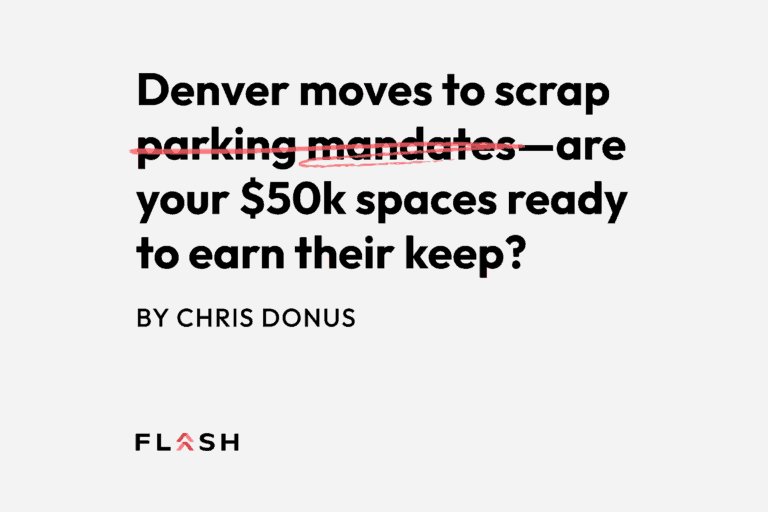Last week Denver’s City Council sent three bills to a summer floor vote that would eliminate minimum parking requirements for every new development citywide — commercial as well as residential. If passed, Denver will join more than 3,000 cities worldwide that have reduced or scrapped parking minimums.
Freeing developers from prescribed space counts may sound mundane, but each space represents up to $50,000 in hard project costs. Too often these spaces sit empty and crowd out more productive and beneficial uses of the real estate they occupy. While those realities lead some to claim the repeal of minimums to be the ‘death of parking,’ we believe this policy shift will elevate standards for experience and ROI in a future where parking is here to stay.
Core insight
Absent parking minimums, the question for developers flips from “how many spaces must I finance?” to “how much yield can each space generate?” Parking shifts from a required line item to a potential yield driver developers can offer owners and operators who want differentiated, next-generation parking facilities for prospective tenants.
Why it matters to owners, operators, and mobility partners
- Next-gen parking runs on data and tech. With no mandate, every space you opt to pour must justify the cost by generating or optimizing revenue with services like EV charging or intelligent parking systems capable of adjusting price to match demand and reach drivers through digital channels. Parking facilities that capture license-plate reads, payment flows, and dwell times can algorithmically balance occupancy, set spot-level prices, and surface the right space at the right moment.
- Balancing oversupply and unmet demand. Most cities’ supply of parking far outpaces demand, but drivers still circle for convenient spaces. Data-driven pricing and availability can trim excess capacity while capturing the premium users pay for proximity and ease.
- Closing the EV charging infrastructure gap. The U.S. market for charging infrastructure totaled $5.1 billion in 2024 with a growth rate over 30 percent CAGR, a tide we anticipate will wash through off street parking facilities as EV adoption climbs. Integrating reservable, reliable Level 2 charging positions properties as convenient infrastructure the next wave of EV adopters will gladly pay to use.
- Staging hubs for autonomous fleets. McKinsey notes that fleet AVs will require centralized maintenance, cleaning, and charging depots. Underutilized parking garages are prime candidates. With companies already running thousands of robotaxis, demand for secure off-peak staging is sure to follow (Waymo’s driverless fleet — in only the initial stages of planned deployment — now boast 1,500 cars logging 250K paid rides a week).
Looking ahead: value shifting from concrete to connection
Denver City Council will consider the measure this summer. Pass or fail, I expect to see champions of parking reform continue their efforts at pace and many major metros to follow suit. As the economics of parking change, parking’s digital transformation and pivot from utility to amenity will accelerate. Developers who opt to invest in a $50K space will require parking systems to welcome a pre-booked driver who can charge their EV, stage an autonomous ride-hail, feed live data back into pricing, and more.

